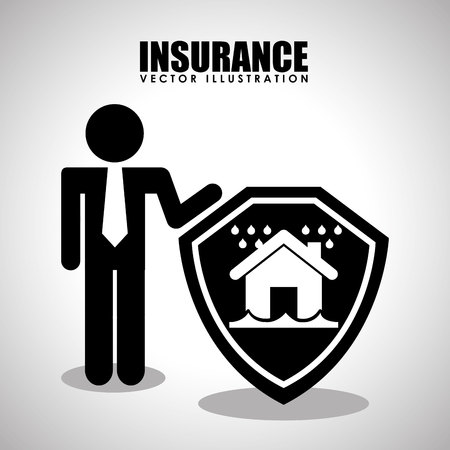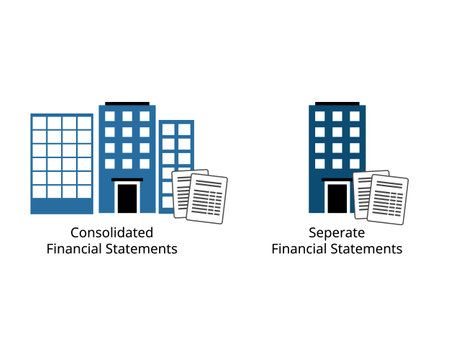Introduction to Tenants and Renters Insurance in the UK
Tenants and renters insurance, often referred to as contents insurance for renters, is a specialist policy designed to protect those who are leasing a property rather than owning it. In the context of the UK rental market, this type of insurance plays a crucial role by providing financial protection against common risks such as theft, fire, water damage, and accidental loss or damage to your personal belongings within a rented home. Unlike buildings insurance—which is typically the responsibility of the landlord—tenants and renters insurance focuses exclusively on safeguarding your possessions and sometimes offering liability cover if you accidentally cause damage to your landlord’s fixtures or fittings. With renting now a popular choice across England, Scotland, Wales, and Northern Ireland—especially among young professionals and families—it’s increasingly important for tenants to understand the relevance of this coverage. Not only does it provide peace of mind by protecting valuables like electronics, furniture, and jewellery, but it can also be a requirement under some tenancy agreements. Ultimately, tenants and renters insurance ensures that individuals living in rented accommodation can enjoy security and stability without bearing the full financial burden of unforeseen events.
2. What Does Renters Insurance Typically Cover?
Understanding the scope of renters insurance is essential for tenants in the UK. This type of policy is designed to offer comprehensive protection, ensuring that individuals renting a property are safeguarded against unexpected events. The following sections provide a detailed breakdown of the standard protections commonly included in renters insurance policies across the UK.
Main Areas of Cover
| Type of Cover | Description |
|---|---|
| Personal Possessions | Covers loss, theft, or damage to your belongings within the rented property, such as electronics, clothing, furniture, and other valuables. Some policies extend protection to items temporarily taken outside the home, for example when you travel or commute. |
| Liability Protection | Provides cover if you are held legally responsible for injury to another person or accidental damage to someone else’s property within your rental accommodation. For instance, if a guest slips on a wet floor and is injured, liability insurance can help cover legal costs and compensation. |
| Alternative Accommodation | If your rental property becomes uninhabitable due to an insured event (such as fire or flood), this covers the cost of temporary accommodation while repairs are carried out, ensuring you have somewhere safe to stay during disruption. |
Key Features in a UK Context
Personal possessions cover: In most UK policies, there’s flexibility in choosing your level of cover based on the total value of your belongings. High-value items (like jewellery or bicycles) may require separate listings or additional cover.
Tenant’s liability: Many UK landlords now request proof of tenant’s liability insurance as part of tenancy agreements. This helps protect both tenant and landlord from costly disputes over accidental damages.
Alternative accommodation support: Given the unpredictability of British weather and risks like burst pipes or severe storms, this feature ensures minimal disruption to tenants’ lives if their rented home is rendered unfit for living.
What’s Not Typically Covered?
It’s equally important to note what renters insurance generally does not include. Most policies exclude wear and tear, deliberate damage, or loss/damage caused by negligence. Landlords’ contents (such as fixtures and fittings provided with the property) are also usually excluded unless otherwise specified.
Summary Table: Standard Protections in UK Renters Insurance
| Protection Area | Included? | Notes/Exclusions |
|---|---|---|
| Your personal possessions | Yes | Certain high-value items may need extra cover; excludes landlords items. |
| Legal liability (tenant) | Yes | Covers injury/damage claims from third parties; intentional acts not covered. |
| Alternative accommodation costs | Yes | If your home is uninhabitable due to an insured event. |
| Wear & tear/negligence losses | No | Routine maintenance issues are not covered. |
| Landlords contents & building structure | No | The landlord should insure these separately. |
This overview clarifies what renters insurance typically protects within a UK rental context, equipping tenants with crucial knowledge when considering their coverage options.

3. Exclusions: What Isn’t Protected under Standard Policies
While tenants and renters insurance provides valuable protection for personal belongings and liability, it’s essential to understand the limitations of standard policies in the UK rental market. Not everything is covered, and knowing these exclusions can help you avoid unpleasant surprises if you ever need to make a claim.
Accidental Damage to Landlord’s Property
One of the most common exclusions in UK renters insurance is accidental damage to the landlord’s fixtures, fittings, or structural elements. For example, if you accidentally spill red wine on a landlord-supplied carpet or damage kitchen worktops, your standard contents policy typically will not cover the repair or replacement costs. Many insurers offer accidental damage cover as an optional add-on, so tenants who are concerned about this risk should consider extending their policy accordingly.
High-Value Items and Single Article Limits
Standard renters insurance policies usually include a maximum limit for individual items, which might be insufficient for high-value possessions such as jewellery, designer handbags, bicycles, or electronic devices. If you own items that exceed the single article limit—often set between £1,500 and £2,500—you’ll need to declare these when arranging your policy and may have to pay an additional premium for adequate coverage. Failing to do so could result in underinsurance or rejected claims.
Neglect and Gradual Deterioration
Damage caused by neglect or gradual deterioration is another exclusion frequently found in UK policies. This includes issues like mould growth from poor ventilation, wear and tear over time, or damage resulting from failing to report a maintenance problem promptly. Insurers expect tenants to take reasonable care of their rented property and act swiftly if problems arise; otherwise, claims related to neglect are likely to be denied.
Other Common Exclusions
Additional exclusions often include loss or damage when the property is left unoccupied for extended periods (typically more than 30 days), theft without evidence of forced entry, and losses related to illegal activities. Understanding the fine print of your policy is crucial—always review documentation carefully and ask your insurer about any ambiguities before committing.
Practical Tip
If you require broader protection than what standard policies provide, discuss optional extras with your insurer—such as accidental damage cover or specified item extensions—to ensure your needs are fully met as a tenant in the UK.
4. Responsibilities: Tenant versus Landlord
Understanding the division of responsibilities and insurance coverage between tenants and landlords is crucial for anyone living in or letting a property in the UK. While both parties have distinct legal obligations, their respective insurance policies also cover different assets and risks. Clarity on these matters can help prevent disputes and ensure both tenant and landlord are adequately protected.
Who Insures What?
Generally, the landlord is responsible for insuring the structure of the building as well as any fixtures, fittings, and furnishings that they provide as part of the tenancy agreement. Tenants, on the other hand, are responsible for protecting their own personal belongings with renters or contents insurance.
| Asset/Responsibility | Covered by Landlord Insurance | Covered by Tenant Insurance |
|---|---|---|
| Building Structure (walls, roof, windows) | Yes | No |
| Landlord’s Furnishings (if let furnished) | Yes | No |
| Tenant’s Personal Belongings | No | Yes |
| Fixtures & Fittings (e.g., kitchen units) | Yes | No |
| Accidental Damage Caused by Tenant | No (unless add-on purchased) | Potentially (with certain policies) |
Legal Obligations under a UK Rental Agreement
The legal framework in England, Wales, Scotland, and Northern Ireland obliges landlords to maintain the property in a safe and habitable condition. This includes repairs to structural elements, heating, plumbing, and electrical systems. Landlords must also ensure compliance with safety regulations such as gas safety checks and fire safety provisions.
Tenants are expected to use the property responsibly and report any issues promptly. They must not deliberately damage the property and are typically responsible for minor maintenance such as changing lightbulbs or keeping the garden tidy if stipulated in the tenancy agreement. Importantly, tenants should secure their own insurance to cover their possessions and liability for accidental damage caused to the landlord’s property.
Summary Table: Key Responsibilities at a Glance
| Responsibility | Landlord | Tenant |
|---|---|---|
| Building Maintenance & Repairs | ✓ | |
| Safety Compliance (e.g., gas checks) | ✓ | |
| Tidiness & Minor Upkeep | ✓* | |
| Insurance for Personal Items | ✓ |
*As specified in tenancy agreement.
This clear delineation of insurance coverage and legal responsibilities helps foster a transparent relationship between tenants and landlords while ensuring each party is aware of their obligations within the UK rental landscape.
5. Tailoring Your Policy: Optional Add-ons in a UK Context
When considering tenants and renters insurance for your UK rental property, it’s essential to look beyond standard coverage and explore optional policy enhancements that reflect your lifestyle and living arrangements. Many insurers offer add-ons designed specifically for the unique needs of UK renters, allowing you to customise your policy for comprehensive protection.
Accidental Damage Cover
This is one of the most popular enhancements among UK tenants. Accidental damage cover provides extra protection for your belongings if they are unintentionally damaged—for example, spilling red wine on a carpet or breaking a television screen during everyday use. While standard contents insurance may exclude such mishaps, adding accidental damage cover ensures you’re not left out of pocket after common household accidents.
Bicycle Cover
Given the popularity of cycling in cities like London, Manchester, and Edinburgh, bicycle cover is an increasingly sought-after add-on. Standard policies may only protect bikes stored inside your home, but with bicycle cover, you can extend protection for theft or damage away from your property—ideal if you commute or travel frequently by bike. Always check whether your chosen policy covers high-value cycles and what security requirements are stipulated.
Protection for Students and Flat-sharers
For students or those living in shared accommodation, specialist enhancements are available. Some insurers offer policies tailored to student lifestyles, covering personal possessions both at university halls and while travelling between home and campus. For flat-sharers, you can find cover that accommodates multiple tenants under one roof, ensuring everyone’s belongings are protected without invalidating claims due to non-family occupancy. It’s crucial to clarify who is named on the policy and how claims are managed in shared living situations.
Other Useful Add-ons
Additional options may include legal expenses cover (for disputes with landlords), personal possessions cover (for items taken outside the home), or even tenant liability insurance (to cover costs if you accidentally damage your landlord’s property). Reviewing these enhancements with a local broker or directly with insurers ensures that your policy reflects both UK legal requirements and your personal circumstances.
Expert Tip
Always review the fine print of each add-on; some may already be included as standard by certain insurers, while others could incur additional premiums. Comparing quotes and levels of cover across providers will help you secure the best value for your specific needs as a tenant in the UK rental market.
6. Making a Claim: The Process in the UK
Should you need to make a claim on your tenants or renters insurance, understanding the correct procedure is essential for a smooth and successful outcome. Below is a step-by-step guide tailored specifically to the UK rental sector, ensuring you know what to expect and how to act efficiently.
Step 1: Assess the Incident and Ensure Safety
Immediately after an incident—whether it’s theft, accidental damage, or another covered event—ensure everyone’s safety first. For emergencies such as fire or burglary, contact the relevant emergency services (police, fire brigade) without delay.
Step 2: Notify Your Landlord or Letting Agent
Inform your landlord or letting agent about the incident as soon as possible. This is not only courteous but often required by your tenancy agreement. Your landlord may also need to be involved if the property itself has been affected.
Step 3: Gather Evidence and Documentation
Collect supporting evidence for your claim. This might include photographs of the damage or stolen items, receipts, warranties, or a police crime reference number if applicable. Accurate documentation will strengthen your case with the insurer.
Step 4: Contact Your Insurance Provider
Notify your insurance company promptly—most UK insurers require claims to be reported within a specified period (often 24-48 hours for certain incidents). Contact details are typically found on your policy documents or the insurer’s website.
Step 5: Complete the Claims Form
Your insurer will provide a claims form, either online or via post. Complete this carefully, detailing what happened and listing all damaged or lost items. Attach all relevant evidence gathered in Step 3 to support your submission.
Step 6: Cooperate With the Loss Adjuster
For significant claims, your insurer may appoint a loss adjuster to assess the situation in person. Be prepared to provide access to the property and answer any follow-up questions honestly and clearly.
Step 7: Resolution and Settlement
If approved, your insurer will outline the settlement terms—this could involve repairing, replacing items, or paying out compensation. Review these details carefully and clarify any uncertainties before accepting the offer.
Helpful Tips for UK Renters
- Keep an up-to-date inventory of valuable possessions with photos and receipts.
- Read your policy documents thoroughly so you’re aware of exclusions and excess amounts.
- Act quickly; delays can complicate claims or result in rejection.
Conclusion
Navigating the UK tenants and renters insurance claim process doesn’t have to be daunting. By following these structured steps and maintaining clear communication with all parties involved, you can help ensure that your claim is processed smoothly and fairly, giving you peace of mind during challenging times.


